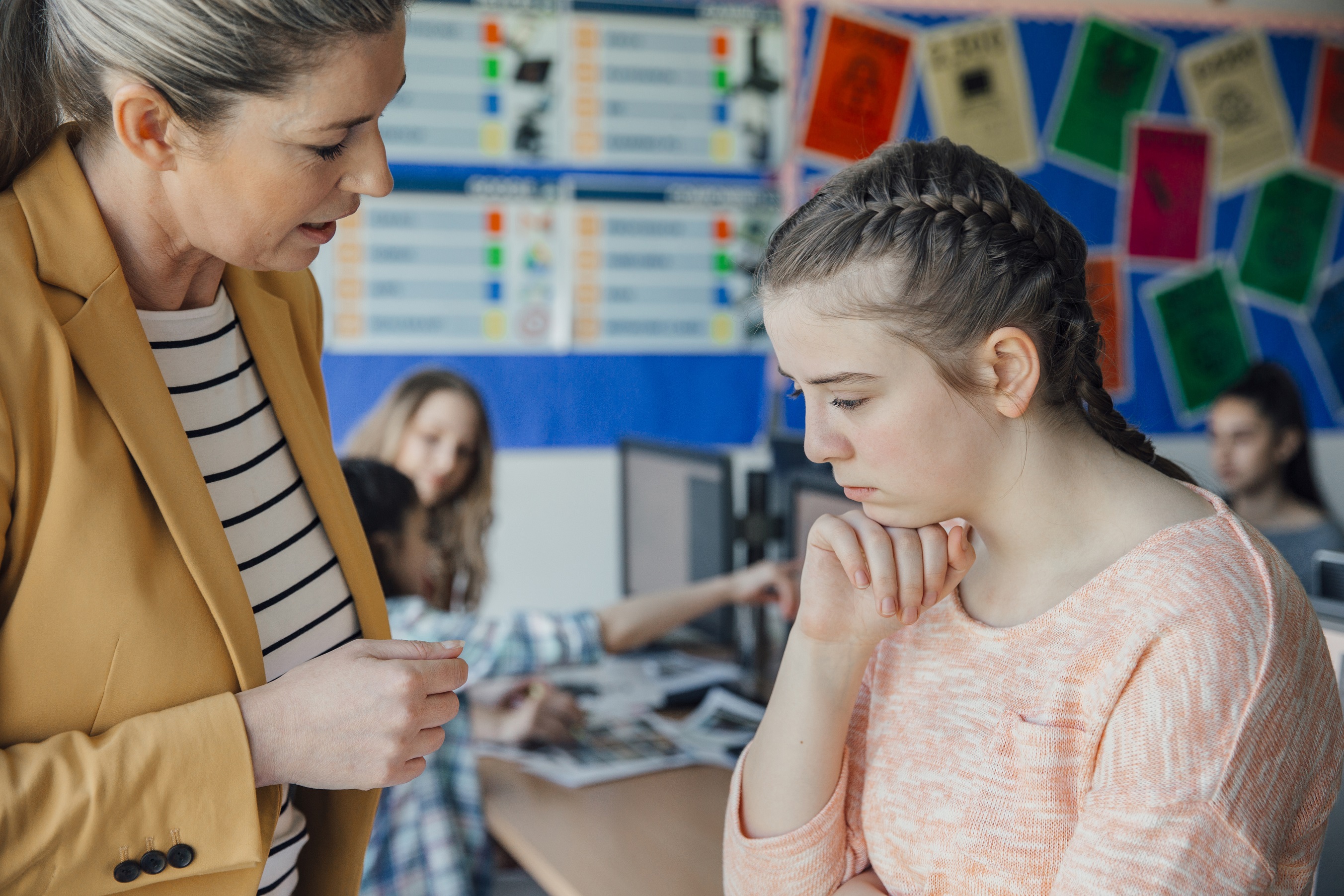In April, in collaboration with our training provider partner The Skills Network, we launched a brand new online course around our new qualification, the TQUK Level 2 Certificate in Awareness of Bullying in Children and Young People (RQF).
The course, which is available fully funded in England, was created to enable those who require a professional understanding of bullying to gain the practical tools they need to tackle bullying head on!
After all, bullying affects many people – not just the victim, the bully, or their family. It affects the teaching staff who need to safeguard their pupils and keep on top of their behaviour policies, and the childcare staff, Scout groups and local art groups who are all responsible for providing a safe environment to the children in their care.
In this blog post, we explore bullying from a range of different angles and explain how this new course serves as an essential learning resource for those responsible for the care of children and young people.
What Does Bullying Look Like Today?

We broadly define bullying as a recurring set of behaviours intended to hurt someone either emotionally or physically. Although this doesn’t apply to all cases, bullying is often aimed at specific groups of people, either based on race, religion and/or sexual orientation.
And of course, we are all in some way, familiar with bullying.
We learn about the consequences of bullying at a very young age. We’re advised against being the ‘bully’ and we may have even been personally affected by it. As we know, bullying doesn’t just take place in early years; it also extends into adult life, rearing its ugly head in our workplaces and across other social environments.
But, in terms of children and young people, what does bullying look like today?
Although we’ve seen a general improvement in the UK regarding young people’s tolerance, bullying remains a major concern.
Recent statistics paint a rather poor picture of bullying nationwide:
- More than half of children aged 11-16 have been bullied about the way they look, with 40% targeted at least once a week.
- Almost half of all girls experience a form of cyberbullying via social media, with 40% of boys having received online harassment.
- 1 in 5 of all children and young people have witnessed bullying within the past 12 months, which impacts 59% of those children’s mental health.
Despite the prevalence of bullying, most adults, especially those in educational and early years settings, feel ill-equipped on how to correctly identify and handle bullying issues.
And to be frank, it’s only getting harder to keep on top of our best practice towards bullying.
Why?
Well, with the rise of new social media platforms, we’ve seen more and more means for cyberbullying to be facilitated.
From comments in live streams, group voice calls in game consoles, unwanted screenshots, to bullying via group chats and Snapchats – the list is seemingly endless, and unfortunately growing!
This is a particular struggle for teachers and childcare staff, as in many cases, the bullying has taken place outside of their immediate setting.
This naturally causes a lot of headaches over jurisdiction – how far staff can actually control, prevent and intervene in these bullying instances?
Cyberbullying is a particularly tricky issue for a number of reasons:
- It can take place at any time, in most cases instantly.
- The bully can potentially hide their identity (appearing anonymous).
- There is the risk that a wider audience can see and even participate in the bullying. For example, public comments and images being shared alone (which, sometimes, can’t be erased completely).
- There are degrees of separation – young people who cyberbully others often don't see the reaction of those experiencing it, making them less likely to stop as they can’t see the impact of their actions.
We have developed a new Level 2 Certificate in Awareness of Bullying in Children and Young People online course to equip those who work with children (or wish to) with the updated guidance on the contemporary principles of bullying, including modules in ‘Bullying in context’, ‘Why children or young people bully’ and ‘What is meant by cyberbullying’.
Recognising Bullying

Contemporary bullying isn’t just comprised of cyberbullying, nor can bullying be confined to being simply ‘physical bullying’ or ‘emotional bullying’ (name-calling) – as bullying is in fact made up of several different types of bullying.
Bullying can include:
Relational Bullying – a deceptive form of bullying that unfortunately goes unnoticed by a lot of teachers and parents. Relational bullying involves ostracizing others from groups, spreading rumours or manipulating situations to make the victim feel like they have an inferior social standing. This form of bullying is particularly prevalent among girls, especially in secondary school settings.
Sexual Bullying – the repetition of humiliating behaviours to target another person sexually. This can be manifested via crude comments, sexual name-calling and inappropriate touching or propositions.
Prejudicial Bullying – based on predetermined negative attitudes towards certain races, religions, or sexual orientation. This can then turn into verbal bullying, physical bullying, cyberbullying and relational bullying – however, the difference here is that the bullying is derived via predeterminations of others based upon their specific characteristics.
With bullying, as you can see, there really is more than meets the eye, which is why bullying can remain almost covert and go unnoticed by many adults.
In fact, bullying is an area that has been researched for many years and will continue to be researched as we learn more and more about new patterns of bullying behaviour.
With the new TQUK Level 2 Certificate in Awareness of Bullying in Children and Young People (RQF), we hope learners will be able to confidently recognise the different forms of bullying among children and young people.
What Makes a Bully?

It can be very difficult for teachers and childcare staff to fully understand what causes children or young people to bully others.
Furthermore, it can be extremely confusing and distressing for parents and families to comprehend exactly why their child has been the one responsible for the bullying. Naturally, in some cases, this causes families to experience feelings of guilt and shame, often questioning if they are responsible in some way.
This brings us to the point – what makes a ‘bully’?
Of course, this isn’t a black and white issue, and in actuality, not all bullies are the same. Each child and young person has different motivations for bullying, and different tactics and styles of bullying (as discussed above). Whilst one bully may exhibit devious forms of bullying, such as cyberbullying or relational bullying, the other may be almost brutish with their physical abuse of others.
By being aware of not only the different types of bullying but also the factors that cause different children to bully in different ways, all of which are covered in the new bullying course, you can really get to grips with the most up-to-date understanding of this topic.
Below are a number of reasons why children may bully others:
- The child’s own emotional issues such as low self-esteem and jealousy of others.
- Lack of attention or neglect from parents and peers (bullying serves as a cry for attention).
- Learnt behaviour from older siblings and parents.
- A mob mentality or enabling influence from a group.
- A lack of understanding of how their actions affect others emotionally.
- Many children are innately more aggressive, hyperactive, dominating, physical and impulsive than others.
Addressing Bullying

With different forms of bullying and various types of ‘bullies’, it is clear to see that identifying bullying, getting to the root cause of it and then addressing it on an individual case-by-case basis requires more than just a basic awareness of bullying.
Feeling unequipped on how to address bullying issues is also often exacerbated by the fact that a lot of children and young people fail to report bullying.
39% of children state that reporting bullying makes them feel upset, with only 17% of children stating that they will always intervene.
This is most commonly due to the fact young people feel scared or feel that they will be victimised themselves if they report bullying, or they may feel that they don’t have the correct skills to interject.
In order to help adults understand how to address bullying while including guidance on involving parents, setting positive expectations for behaviour and different forms of intervention, the Level 2 Certificate in Awareness of Bullying in Children and Young People has been created to cover the following topics:
- Action to be taken when a child or young person is being bullied.
- How to support a child or young person who is being bullied.
- How to approach the potential bully.
- Understanding government guidelines for bullying.
- Government and Ofsted guidance on tackling bullying.
- Policies and procedures for bullying.
Register Your Interest For This Funded Qualification
We hope that with some improved insight into bullying and further information on our new course, you can go on to improve your understanding of bullying and your ability to tackle it.
With funding available for the course in England, you now have the chance to gain from a nationally recognised qualification in bullying at no cost.
For more information on the course, please click here to register your interest.
This blog was written in collaboration with our training provider partner The Skills Network.




